
The Wateree River is a bream fisherman’s delight
Tell someone you’ve been fishing on the Wateree River, and they’re likely to ask how the catfish are biting.
Tell them you’ve been fishing for bream, and many will raise their eyebrows, look embarrassed at your ignorance, and fill you in on some secret honey hole down around Rimini. If they do, just give them an “aw shucks” sort of smile and open your cooler to show them what they’ve been missing, and to let them know that the Wateree River ain’t just a catfish hole.
The Wateree River begins at the base of the Lake Wateree Dam in Kershaw County and winds its way downstream, forming the border between Richland and Sumter counties before meeting up with the Congaree River just upstream from the Santee Cooper lakes. From top to bottom, the river is teeming with several species of bream, and July is a great month to target them.
While many of lakes in South Carolina feature very high water temperatures this month, the Wateree River’s constantly moving water generally keeps the fish cooler and more active. Plus, many anglers spent the full-moon phases of May and June stocking their freezers with bream and are now looking for a respite from the heat or focused on getting ready for deer season. Along with those sportsmen who just don’t view this river as a bream hotspot, they are all missing out on some of the hottest bream action of the year.
Bream spawn on the river the same way they do in lakes and ponds, but some anglers find it easier to find bream in the river. They cross a lot of water off their list of places to try because of fast current along much of the banks. This narrows the amount of water in which bream will bed, so finding the calmest water possible is the key to finding beds, and when you find one, you’ll find a cluster. And you’re just as likely to find the bream-bed jackpot — a cluster of clusters.
Sumter’s Ken Nutter has fished the Wateree River for more than 20 years, but he admits to targeting bream for only the past three years.
“I caught a lot of catfish on this river, but I just never even thought of fishing for bream here,” he said. “I always thought they wouldn’t like the current here, but there are plenty of breaks in the current that are sure spots for bream. Fallen trees close to shore are prime targets.”
Those fallen trees are certainly great hideouts for bream, but they aren’t the only spots to target. Small cuts along the banks create slack water or eddies that give the fish a break from the current, with or without structure. Even the smallest of these cuts can have you limiting out quickly on some days.
“Live bait usually works best in these spots,” Nutter said, “mainly because the area is so small, and you want to keep the bait in that tiny area as long as possible.”
Another great place for bream is along the base of the high, bluff banks that are common along the river. These red-clay banks can be as tall as 40 feet, and insects, worms and tiny frogs drop from these banks into the river, and bream know they can get easy meals here. The banks also make it difficult for land-based predators to stalk, offering added protection for the bream. When a downed tree is also present, it’s a bream-slayer’s paradise. Crickets or worms work great here too, either under a slip cork or on a simple bottom rig. Spinners in eighth-ounce size are also good bets.
Sandbars are other promising spots. These white-sand beaches lead gradually into the river. They often look bare at first glance, but a closer look with polarized shades will often prove worthwhile.
“Sometimes these sandbars are void of fish, but other times you’ll see bream everywhere, especially on the back sides of them,” Nutter said, referring to the downriver side of the sandbars where pools of slack water are formed.
Dropping crickets or worms under a cork on this side can do wonders, but don’t be shy about tossing a small spinner or crankbait all along the flooded sandbars. These lures stand out really strong against the white sand and are too enticing for bream in the area to resist.
Some of the most overlooked areas on the Wateree are the many small creeks that are present along the whole length of this river. Perhaps it’s because the river’s fluctuating water levels keep many folks from fishing these spots, but one thing is for sure: when the water level is right, these spots hold large congregations of fish.
Grannies Quarter Creek is the first creek below the Wateree Dam, and it’s one of the better creeks to fish. Such creeks should be an angler’s first choice for finding bream during periods of extremely high water or fast current. Even when the water is too low to drive a boat into them, it still pays off to fish where these creeks meet the main river.
Spears Creek is another hotspot, and because of its location, you’ll rarely encounter another boat. It’s about eight miles upriver from the US 378 landing. Because of distance, obstacles and water levels that are often quite low, you won’t see many larger boats along this stretch. It’s a haven for jonboaters with smaller outboard motors, making the distance too long of a haul for many.
“I can catch my limit closer to the landing, but the ride to Spears Creek is definitely worth it,” Nutter said. “The bigger bream are just easier to find here, the scenery is beautiful, and you’ll see turkeys, hogs, and deer all along the ride.”
The No. 1 rule for catching keeper-sized bream on the Wateree river is an easy one, and isn’t much different than fishing anywhere else. Keep your bait or lure close to cover. The more debris-cluttered an area is, the more attentive anglers should be when fishing it. Avoiding downed trees, vines, and tangles for fear of getting hung up is a big mistake.
“If you’re not getting your lure snagged on something from time to time, you’re not fishing this river right,” Nutter said. “It does no good to keep the same lure on all day if it means you aren’t catching good fish, and the good fish stay close to all that cover, so that’s where your lures should be.”
Nutter also has a tactic he uses when he’s catching only small bream from a hole: he changes the depth he’s fishing. Sometimes fishing just six inches deeper gets his bait to the bigger fish, and sometimes, the depth change is the difference between catching bluegill and catching shellcracker.
It doesn’t take fancy gear to pull a bream out of these waters, but Bishopville’s Joie McCutchen insists ultra-light tackle is the way to go.
“Ultra-light gear really adds to the fun of catching these fish,” she said. “A 1-pound bream on this gear feels like you’re fighting a shark, especially in the current of the river. And when using artificial lures, it’s better than bass fishing because when you find a bream bed, the action is faster and the fight is just as fun.”
McCutchen locates bream holes with live bait under a cork, then switches to small spinners and tiny crankbaits.
“It’s more fun, and on some days, I catch bigger fish on the lures than on live bait. It’s like the bigger fish prefer moving targets over suspended ones,” she said. “I prefer the Mepps Aglia. It gives you three colors in one tiny offering. The blade, the body, and the dressing can all be different colors, and bream are usually going to see something they like in that small package.”
When fishing the Wateree River, don’t spend too much time on an area that isn’t producing. If you’ve been fishing a spot for ten minutes and have tried a few different depths with no luck, move on to another spot. Focus on structure, breaks in current, small creeks, bluff banks, and sandbars. Fish those spots and show folks at the landing that catfishing isn’t the only game in this river.

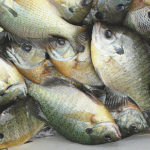
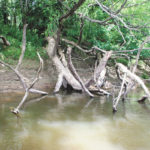
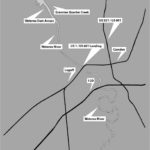
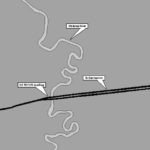
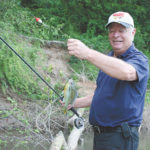
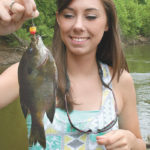
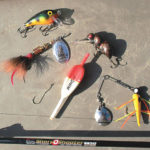
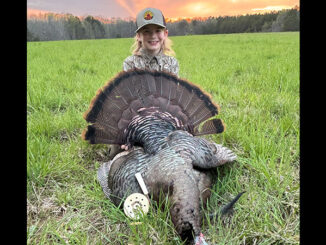
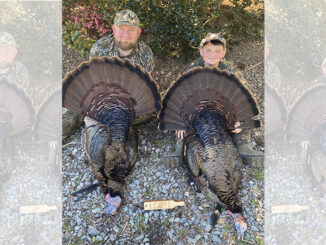


Be the first to comment